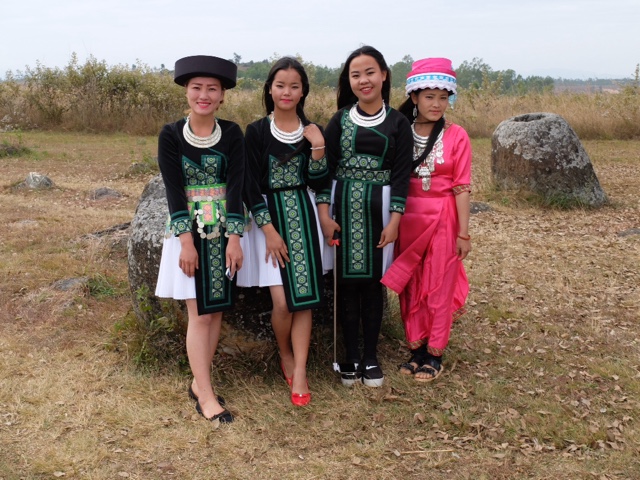Gordon: The regional capital of Phonsavan, where we are spending three nights, is well-known for two things: the Plain of Jars, and unexploded ordinance (UXO).
The Plain of Jars is an area with clusters of carved stone vessels. Although little is known about the culture that created them, they are believed to date to the Iron Age (3rd century B.C. to 3rd century A.D.) They come in a variety of sizes, the largest being about 2.5 metres in height. Their function is unclear, but it is believed that the recently deceased may have been placed in a jar until the body was reduced to only bones. At this point the remains may have been removed from the jar and buried or cremated.
During the Vietnam War Laos was heavily bombed to assist the government forces in their civil war with the communist forces (the Pathet Lao), and also to impair movement of personnel and materials along the Ho Chi Minh Trail. This "Secret War" saw, on average, a B-52 load of bombs dropped on Laos every 8 minutes for 9 years. An estimated 30 percent of the munitions did not detonate, littering the country with millions of devices that are still explosive. Twelve thousand people have been killed by this UXO since the end of the War, and they continue to die at the rate of about three per month. Many more, 40 percent of them children, have been maimed.
We visited the offices of Mines Advisory Group (MAG) an NGO that trains Laotian to clear UXO. Later we visited the Plain of Jars Site #1 and saw the results of their work on the ground. The edges of the paths at the site have concrete markers set into the ground to indicate that the area is safe. Only a few of the jar sites have been cleared so that they may be visited. UNESCO World Heritage status for the Plain of Jars is on hold until more of the sites are cleared. More significant to the local economy is the arable land that lies fallow due to the fear of UXO.
Many of the hotels and restaurants in Phonsavan are decorated with bombs and other war material. The guesthouse where we are staying, for example, uses a 2 metre long cluster bomb casing as a fire pit for the morning and evening fires. Cluster bombs, the most common type of bomb dropped on Laos, are particularly odious. The casing opens in mid-air releasing several hundred tennis ball size anti-personnel bomblets. They are attractive to children and have caused most of the ongoing carnage. The U.S. is one of the countries that has not signed the international convention to prohibit the use of cluster bombs.





No comments:
Post a Comment